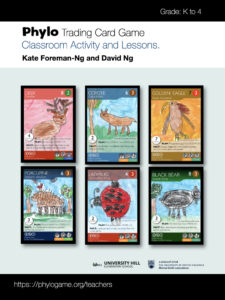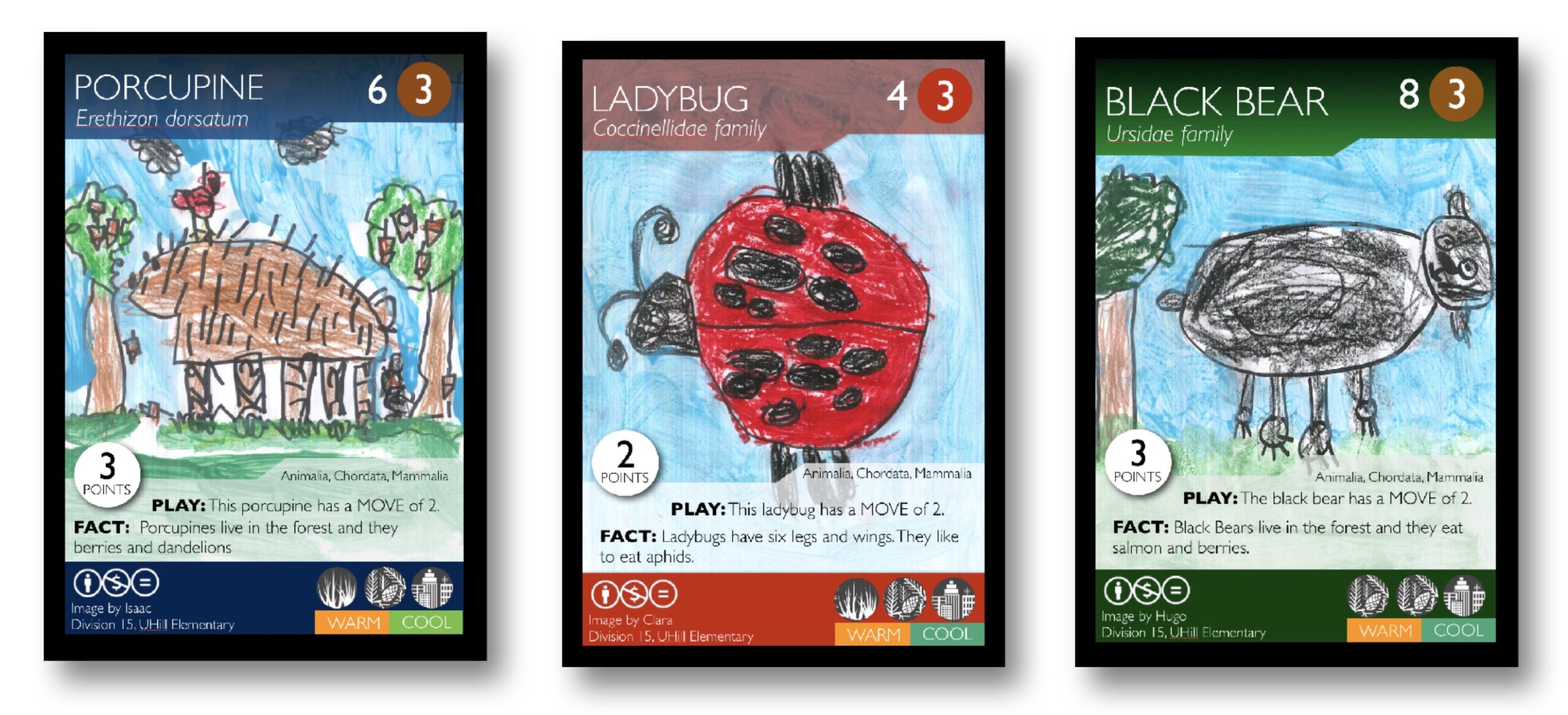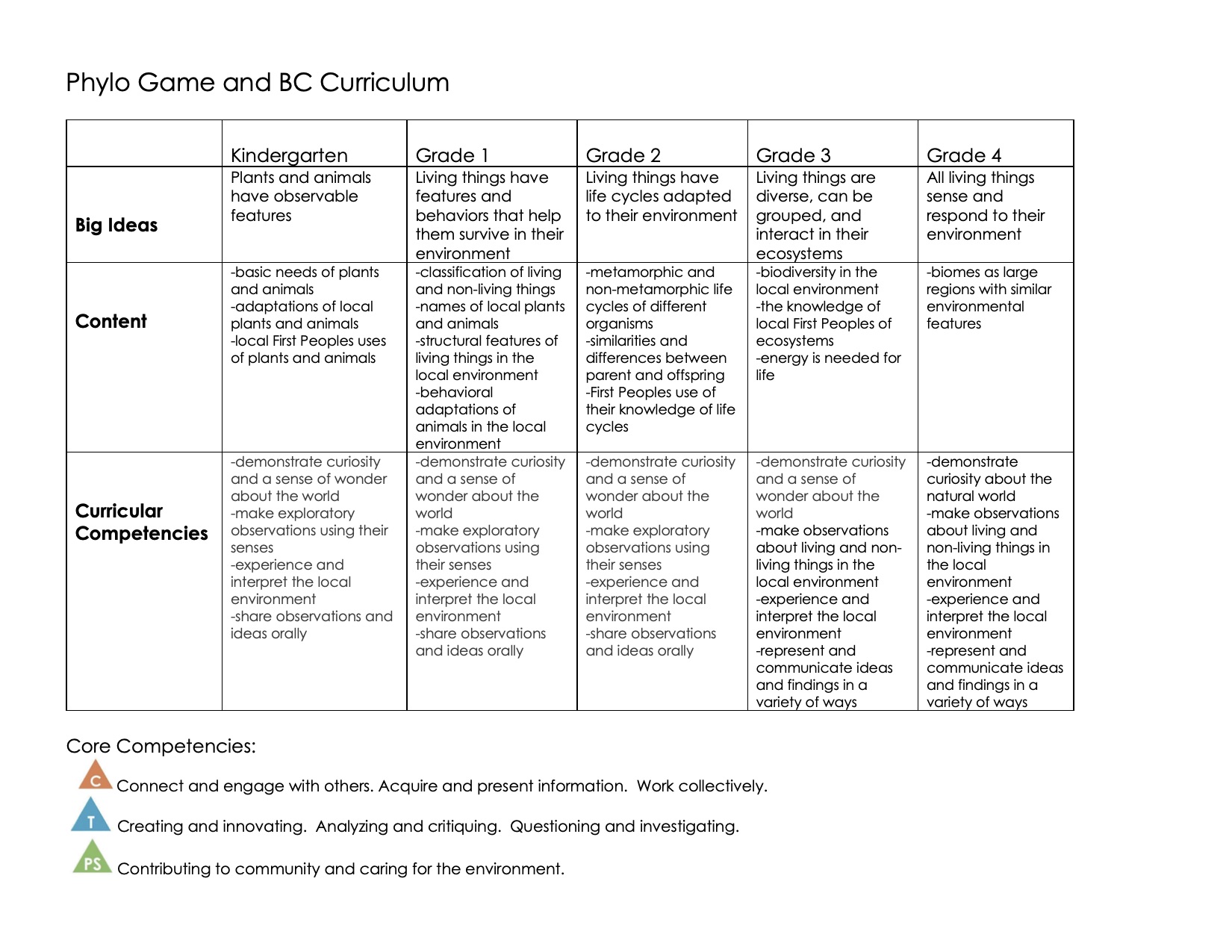 PUBLISHED MARCH 7, 2022
PUBLISHED MARCH 7, 2022
This section has full instructions for teachers to make a Phylo deck with their classroom. This includes lesson plans suited for Kindergarten to Grade 4 age levels, although note that these lessons can be easily modified for grades 5 to 7.
QUICK LINKS:
Lesson plan package (Primarily designed for grades K to 4) – pdf document (~50Mb)
Lesson plan slides – powerpoint | keynote | pdf (~100Mb each)
How to play instructions – video link
Printing a deck for play/sorting – link | purchase deck (other available decks to purchase)
Instructions for creating deck species lists – link (esp. step 7 onwards)
Card making templates – powerpoint | keynote
Card back PNG (825 x 1125) – link
Game Crafter card making and printing service – link | card making video
LOGISTICS: (full details in the lesson plan package pdf above)
Grades: This package is specifically designed for grades K to 4, but can easily be adapted, and possibly shorten for older grades as well (i.e. some of the lessons can be combined since students would be already more familiar with certain concepts).
Student Time: About 6 x core 30 minute lessons (slides and lesson plans provided – see above), with some add on classroom work or homework (usually no more than an hour per lesson). These can be scheduled to the teacher’s preference. This package will also highlight some additional activities that can be included to support the lessons (especially in the K to 4 grades)
Teacher Time: If the goal is to produce a professional deck of cards (i.e. teacher arranges for professional printing and collection of money from parents to purchase decks, this will likely involve about an extra 3 hour effort to scan or take photos of pictures, work on the professional card layouts (via provided powerpoint and keynote templates – see above), and then uploading to a printing site such as thegamecrafter.com. Note that printing usually takes about 4 to 6 weeks (so some planning required if you want decks to arrive before end of school). Note that approximate cost of a classroom deck is about US$12 each. Feedback from other teachers note that after you’ve done this once, it becomes pretty straightforward and much quicker the next time around, since you can save your card templates for next time.

Note: although getting professionally printed cards (see cards above) takes a bit of extra work, it’s clear that when the kids get the cards, it’s totally worth it!
Materials: The usual paper and art supplies, a projector (if using slides provided – see above), a printer for printing some cards to play with (or you can also purchase a deck or two at https://phylogame.org/decks/, occasional access to a large room like a gym is great, but a classroom also works. Preparations for professionally printed cards will require the teacher to have access to powerpoint or keynote programs.

GENERAL LESSON HEADINGS:
Lesson 1: Introduction to Biodiversity: it’s everywhere, it’s pretty awesome, and it’s super important. Brief glimpse of phylo cards.
Homework: student will pick a species. This could be their favourite living thing, or something from a set list of organisms given by teacher. Or both!
Lesson 2: Biodiversity is (obviously) diverse. Using cards to play sorting games to increase familiarity, as well as touch upon concepts such as size, habitats, and trophic strategy (food chain).
Homework: student will research the size of their species.
Lesson 3: Living things have many different physical features. Using cards to compare physical features. Gym activity highlighting sizes.
Homework: student will research the habitat of their species.
Lesson 4: Living things and their habitats. Gym activity highlighting the different habitats. Showing cards and asking where does the species live?
Homework: student will research why their species is perfect for their habitat.
Lesson 5: Adaptations and Environmental Events. Talking about adaptations. In the gym with the different habitats, and play with environmental events.
Homework: student will research the trophic strategy of their species. Will make a headband highlighting their species habitat and food chain preferences.
Lesson 6: Food chains. Introduction to trophic strategies and students will try and recreate a food web in the gym. Looking at food chains when using the cards.
Homework: draw/paint a picture of your species.